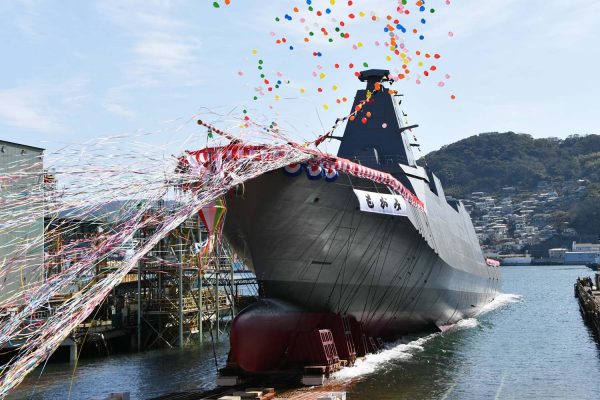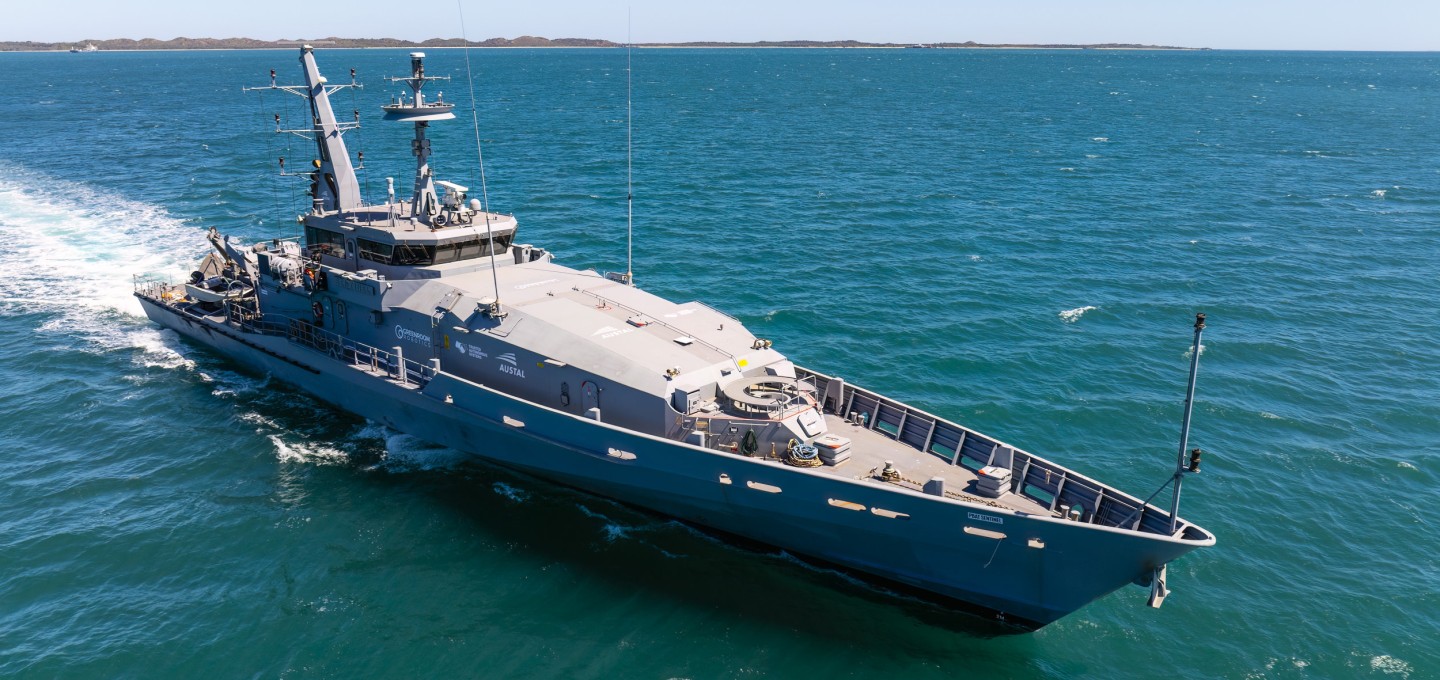I don’t think that is an apt description of the process.
Its very hard to one sentence what is going on. But uniforms are way more back seat in this process. We should not expect a normal procurement process, and large amounts of Australian priorities to be included. Or a design to meet normal RAN priorities.
“The only thing we’ve been approved to [change] is if it’s in a different language,” Head of Navy Capability, Rear Admiral Stephen Hughes, told the Senate on 28 June.
Any other changes, he said, will require the project team to first go back to the Defence Committee – which is chaired by the Secretary of Defence - and then seek the approval of the National Security Committee of Cabinet (NSC).
So changing the colour of the paint would require approval of both the secretary of defence and the NSC. Not going to happen. Because changing the colour of the paint would require retendering, acquisition, could delay the project or costs. But we are getting signage in English.
The overall Sea 3000 project is still in its early phases with the initial ATM yet to formally close. When it does, according to testimony by Defence officials in Senate Estimates, Defence will begin a process to determine which tenders are viable before moving forward to a down select later this year.
“We need to prove which are viable and which are non-viable, and the viable ones would then be put to government for a decision,” First Assistant Secretary Lutz said.
OTOH, if the VL MICA is fitted well above the waterline (which it might be, if the physical space required by the VLS is small and since the missiles themselves are only ~112 kg each) then trying to replace it with a Mk 41 would trigger topweight issues like the ANZAC-class frigates experienced.
I don't think we are getting Meko.
I expect the Germans and the Spanish to be identified as non-viable. There is not an ongoing hot production line with orders being completed. They may have some sort of lifeline saying, that if the situation was to change, they could be viable, but currently not as the order run is completed and new ships are not likely to be delivered in time. I also think the RAN doesn't really want a corvette from Spain with no ASW, or a German Meko with a weird Egypt fitout. Both had to be considered as Spain was making a lot of noise, and people always liked the german gear. Navantia and TKMS can hold their heads up high, they weren't selected simply because of the timeframe and lacking current ongoing orders. It won't hurt future business.
I am 98% confident, that we are getting the new FFM. 1% that it will be the older Mogami, and 1% that Korea or the project will be cancelled/transformed as very distant but anything is possible options. The reason for FFM is that the existing Mogami is basically wound up as a project, while FFM is signing contracts right now, and can explore additional options and giving already contracted ships to transfer to Australia. Its hot. An existing mogami would be a whole new project. Risk in this case, is starting a whole new orphaned project from scratch, in Japan and having that program compete for resources with Japans own FFM program. That is never going to happen. Japan would pull the entire offer.
Imagine NZ wanting to buy another Anzac build, right now, but at the Osborne yard, built by ASC/BAE, getting delivery by 2029. It would never, ever happen, for dozens of reasons. No matter, how "low risk" and "proven" the Anzac hull is, it isn't going to be built. The project would be high risk and extremely unproven and certain for disaster. Its not about platforms in isolation, its about projects.
I know in the forums and in the media Australia treats its military procurement like a sports team, or a horse race. We pick something personally we like, then we speculate and talk about it for months. I know it engaging, its dramatic, it sells papers, it drives clicks. A competition, a race is always attention grabbing. This isn't that. Japan has been waiting decades for this opportunity. From reports, Japan is just blowing everyone out of the water and knocking it out of the park. The biggest ship, the most capability in every aspect, the most aggressive pricing, the most ambitious schedule, the most planned local support plans, the most national government support. Mitsubishi isn't building this, Japan is.
The working goal, ADM understands, is for a contract to be signed in early 2025 ahead of the federal election, which must be held by May of that year. This would be followed by a brief period of detailed design before construction commences in 2026 for delivery of the first vessel to the RAN in 2029.
There is talk about Japan supplying perhaps two vessels before 2029. Again, knocking it out of the park. Japans build is so aggressive, because they aren't just making a statement to TKMS, Navantia, Korea, they are making a statement to China. They are going to be building ships like their nation depends on it. They are serious about building an Australian supply chain, because they want to scale the bejesus out of it and with Japans declining population that is hard.
I hope the decision makers are looking at best value for money and lowest risk through a lens of knowing who the best operators are. We would be stupid not to engage SAAB, CAE and other proven partners on this. The more talent and experienced eyes we have worked with before, the lower the risk of working with a new designer
Well the future doesn't have to be dark. One could imagine a future where Saab, CEA, and others are all launching joint Japan/AU projects to grow the ships for the future. Saab consoles, sensor fusion, CEA, Thales/NEC sonar, etc. Possibly even bringing in other AUKUS partners. If we do build FFM, then cutting out the old radar and just slotting in our own monster and filling the hull with concrete ballast won't be a thing. We will have to work in partnership with Japan to develop a solution. TBH that is probably a better way forward. Things are more integrated now.
But also this is likely to not be government facilitated. Japanese suppliers will be directed to pair up with an Australian. If anyone in Australia works in those industries, my advice would be make a Japanese friend.
The local build program is likely to be very interesting, I think it will be very different from what people think.





